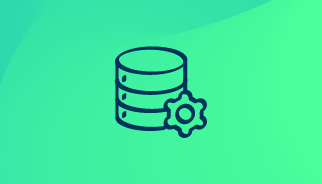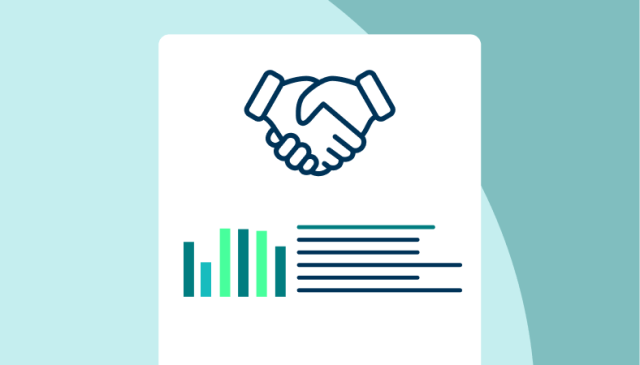Emergency Preparedness: 10 Questions You Must Ask Yourself
These days, it’s not a question of “if” but rather “when” a severe weather incident can impact your area.
Fortunately, there’s good news. With the right tools, you can take proactive steps now to prepare your organization in case of a disaster.
Start with these 10 questions about your emergency management plan and remember the 4 Cs of disaster response: communication, coordination, continuity, and collaboration.
And to set your plan in motion, download our free Emergency Preparedness Checklist.
1. Do we have a disaster response plan?
If your answer is “no,” now is the best time to start. Wherever your business is located, you must have a documented disaster plan that includes:
- How everything from recovery efforts to business continuity will be managed.
- How to prioritize and allocate resources after the event.
- Your communication process with staff and stakeholders.
- How media/community relations will be handled.
- A medical response plan.
From general procedures to a region-specific (i.e., hurricane, tornado, wildfire, etc.) plan, your organization needs to know what to do and how to respond.
2. Are hazardous substances accounted for?
Make sure you’re aware of any hazardous materials in your facilities. Health or safety concerns can arise if these materials are exposed to extreme heat. Rescue workers and emergency coordinators must be made aware of these risks.
An efficient computerized maintenance management system (CMMS) can help you keep track of hazardous materials so you can:
- Maintain accurate records of the types, quantities, and locations of cleaning solutions and solvents.
- Identify any hazardous substances in your building materials.
- Make sure everyone across your organization has access to these lists when needed.
Having a robust asset management solution helps you improve efficiency and better manage your facilities so you can have more confidence day-to-day.
3. Who’s in charge, and of what?
In the face of an emergency, pre-determined leadership can bring order amid chaos. Be sure to designate a clear chain of command to streamline your organization’s decision-making. A proactive response can minimize downtime and get your organization back on track faster.
A few important responsibilities to consider in case of a disaster include:
- Who is the decision-maker and who can act as proxy?
- Who handles communications to employees and the public?
- Who is responsible for overseeing unaffected parts of the business?
- Who are the backups for essential personnel?
Remember to let emergency responders handle what they need and to be there to support them. Need building plans or other critical information fast? A CMMS provides a centralized place to quickly share critical data about your buildings and their components.
4. Are employees trained for emergencies?
Coordination and collaboration are key, especially during disaster response. Before you need it, establish a dedicated emergency response team along with disaster-specific tasks. Regular training and drills are essential. They can help you gauge your staff’s capabilities for performing certain tasks and avoid confusion if and when it’s not a drill.
- Clearly define the roles and responsibilities of each employee.
- Establish backups for essential personnel.
- Include the entire organization in training exercises so each person understands their role.
Your CMMS partner can coach you through the emergency response process. Don’t forget to schedule periodic check-ins between primary users and vendors to ensure preparedness aspects are covered.
Ask your insurance provider about any available training to help you minimize risk.
5. What’s the communication plan?
A crisis communication plan outlines how to share information before, during, and after a disaster so nobody is left in the dark. Have a clear plan how to disseminate information to different stakeholders: employees, citizens, building occupants, and the media.
- Appoint key personnel including a spokesperson and dedicated media contact.
- Determine the best channels for delivering messages, and don’t forget two-way radios if cell service goes out.
- Identify solutions for any potential barriers such as facility or infrastructure damage.
A solid CMMS offers mobile apps to help employees get the information they need, when they need it.
6. How will we document work during the recovery process?
After a disaster, you can expect to be asked multiple times for documents by government agencies and insurance companies. Tracking labor hours and costs should already be standard operating procedure so you’re covered. You should also have a detailed list of all assets stored in a protected system.
A centralized CMMS lets you take control of your asset lifecycle managements and maintenance inventory. It allows you to leverage data for better access and visibility when it counts.
- Provide records of work tasks performed on equipment, such as gutter cleaning or fire system tests.
- Document the current state of buildings and equipment before a disaster hits.
- Technicians can use mobile phones to snap pictures of assets in the field and attach to the work being done.
7. How will we manage volunteers?
It takes a village, and helpers will show up to assist with the recovery process. Before you enlist them, think about coordination and safety measures like:
- An age limitAge requirements for volunteers.
- A sign-in sheet to track who’s helping.
- Requiring or providing safety equipment such as hard-sole shoes, gloves, or vests.
- Providing plenty of water and knowing people’s limits.
Assigning people to smaller teams allows for more oversight and better coordination of who’s doing what.
8. What mutual aid agreements are in place?
A mutual aid agreement allowing two or more entities to share resources can be incredibly helpful in the wake of a disaster. This way a plan has already been established to address the legal, technical, and procedural issues for when one governmental agency must help another.
Having a formal, written mutual aid agreement is critical, so questions surrounding issues like liability and compensation are already agreed upon, instead of adding confusion to the chaos after an event. .
9. Do we have backups for essential personnel?
The loss or absence of even one or two key people can greatly hinder response efforts. Backups should be identified well in advance. All backups should participate in all trainings and drills as if they’re the main point of contact for that position.
10. Do we have a unified front?
It’s important to make sure everyone in the chain of command knows what they need to do and they’re prepared to work together. An emergency is the worst time to have miscommunications or people unclear about what they should be doing.
Every employee should support the emergency coordinators and other key personnel to the best of their ability. Choose the positions for your personnel carefully to ensure this is the case. A consistent and unified front is key to stabilizing the situation and setting up your community and organization for the best possible recovery.
Conclusion
When it comes to emergency preparedness, all points lead to having a reliable CMMS in place. Learn how to evaluate CMMS solutions beyond cost to choose the one that’s right for you, so you can ensure you’re prepared when disaster strikes.
Or find out more about what benefits a modern CMMS should offer here.



